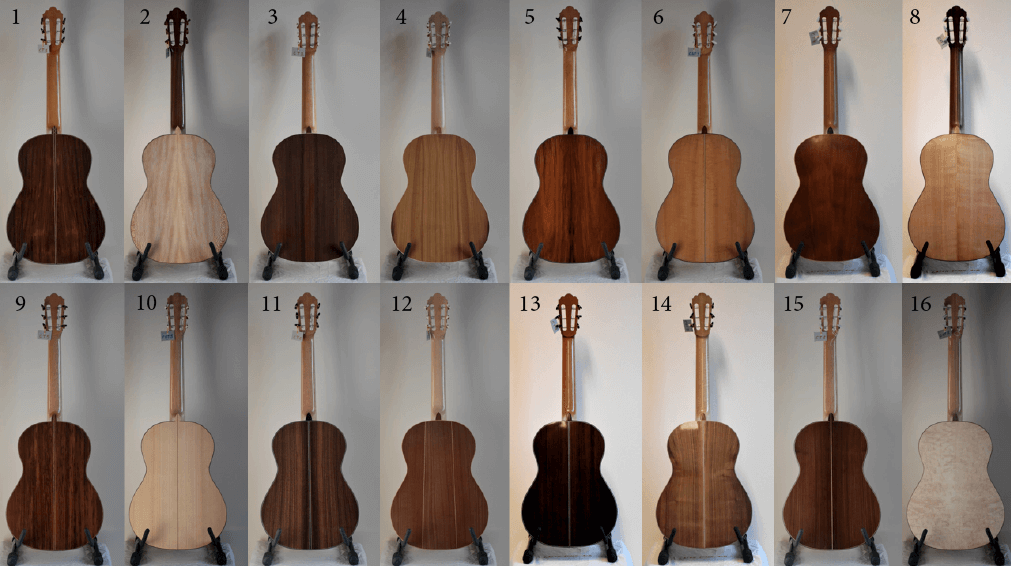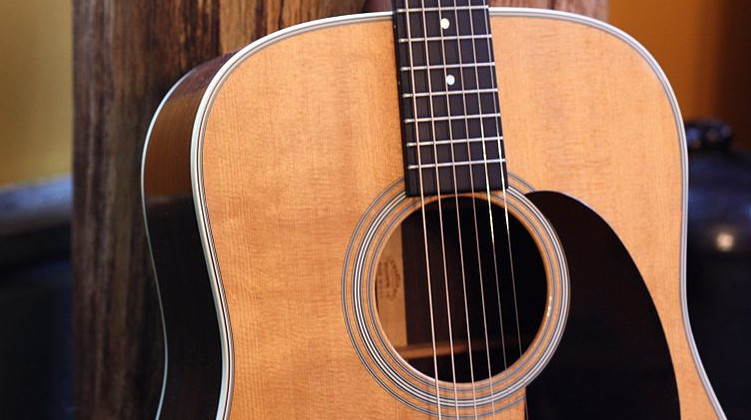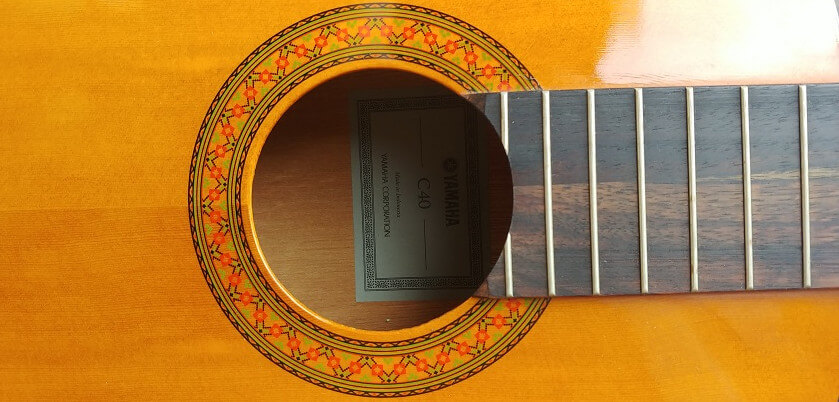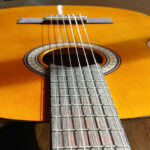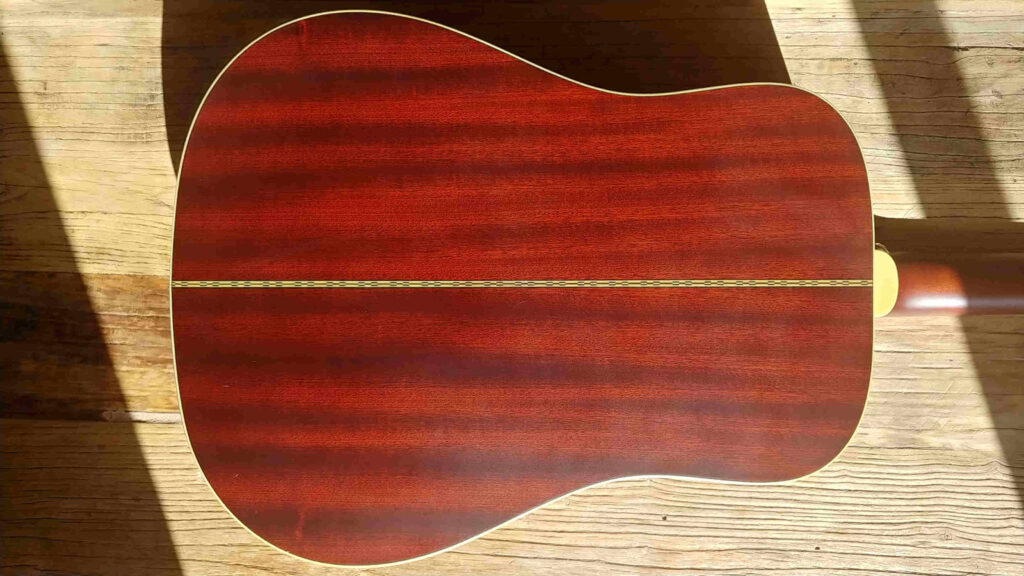
The most valuable classical guitar in the world – painstakingly crafted by luthier Herman Hauser to Andrés Segovia’s exacting standards – has a spruce top and Brazilian rosewood back and sides.
But research suggests the quality of its sound has little to do with the expensive rosewood and everything to do with the luthier’s skill.
Brazilian rosewood has traditionally been considered the gold standard for acoustic guitar backs, both for its beauty and its acoustic properties. Other tropical tonewoods are also highly rated such as Indian rosewood and mahogany. Sapele and walnut are less highly regarded, although luthiers are turning to even less traditional woods as many of traditional species have become endangered and subject to trading restrictions.
Despite this trend, many guitarists still believe the traditional back and side tonewoods are superior, and are even willing to pay more for such guitars.
A group of researchers from the Lancaster, Cambridge and Sorbonne universities set out to test this theory.
Six steel-string acoustic guitars were custom built for the study by Fylde Guitars’ based on their Falstaff model. The top plates were made of Sitka Spruce (Picea sitchensis) with only the back and side plates made of six differing woods: Brazilian rosewood, Indian rosewood, mahogany, maple, sapele, and walnut. The guitars in the test were strung with Elixir Nanoweb Light Bronze Strings, which were changed twice on all guitars at the same time.
- LEADING GUITAR STRINGS: Made with 80/20 bronze wrap wire and our proprietary featherweight NANOWEB…
- BRILLIANT TONE: Elixir Strings are often rated the best acoustic guitar strings, you can trust in…
- CORROSION RESISTANT: The NANOWEB Coating protects from tone-deadening sweat, corrosion, humidity and…
- MADE IN THE USA: Elixir Strings are lab- and field-tested and made to exacting specifications in our…
- CONTENTS: 1x Single Pack of Elixir Acoustic Guitar Strings, 80/20 Bronze with NANOWEB Coating,…
There are many opinions about the importance of back and side woods, but the science suggests they’re not as important as the top plate – a situation quite different from a violin where the internal rib structure is more flexible.
The guitar’s back plate is mainly involved in just three low frequency modes, which are determined by a combination of the mass of the back and its stiffness in the lowest clamped mode, the study’s authors said. This limited influence is something a maker can adjust for when using different types of wood.
The test backed up this theory: 52 guitarists wearing welder’s goggles in a dimly lit room to stop them identifying each guitar were unable to differentiate between the six guitars.
“The results of a blinded ABX discrimination test, performed by another subset of 31 guitarists, indicate that guitarists could not easily distinguish the guitars by their sound or feel,” the study’s authors found. “Overall, the results suggest that the species of wood used for the back and sides of a steel-string acoustic guitar has only a marginal impact on its body mode properties and perceived sound.”
Figure three from the research below shows just how evenly matched the six instruments were in a blind sound test rating.
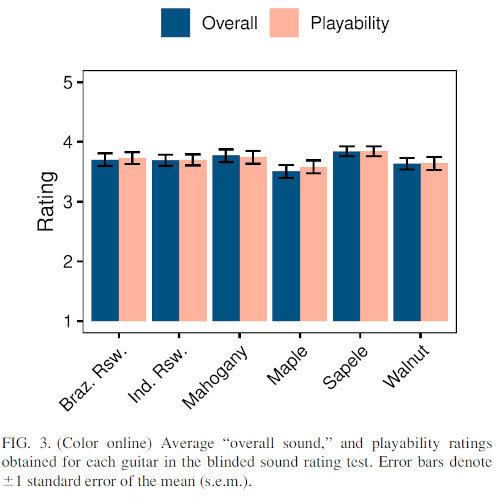
While the study showed the benefits of using lower-cost and more widely available tonewoods for acoustic guitar sides and backs, it didn’t specifically answer the question of whether materials like laminates or carbon fiber composites could also act as an effective substitute. However, history suggests they could – if the luthier was skilled enough.
Antonio Torres, who created the modern classical guitar we know today in the late-19th century, once built a guitar with Papier-mâché back and sides to prove how little impact it had on sound quality. While modern guitarists are unlikely to ever play such a uniquely-constructed instrument, this study does suggest that guitarists should judge a guitar on its merits more than the species of tonewoods used in its construction.




